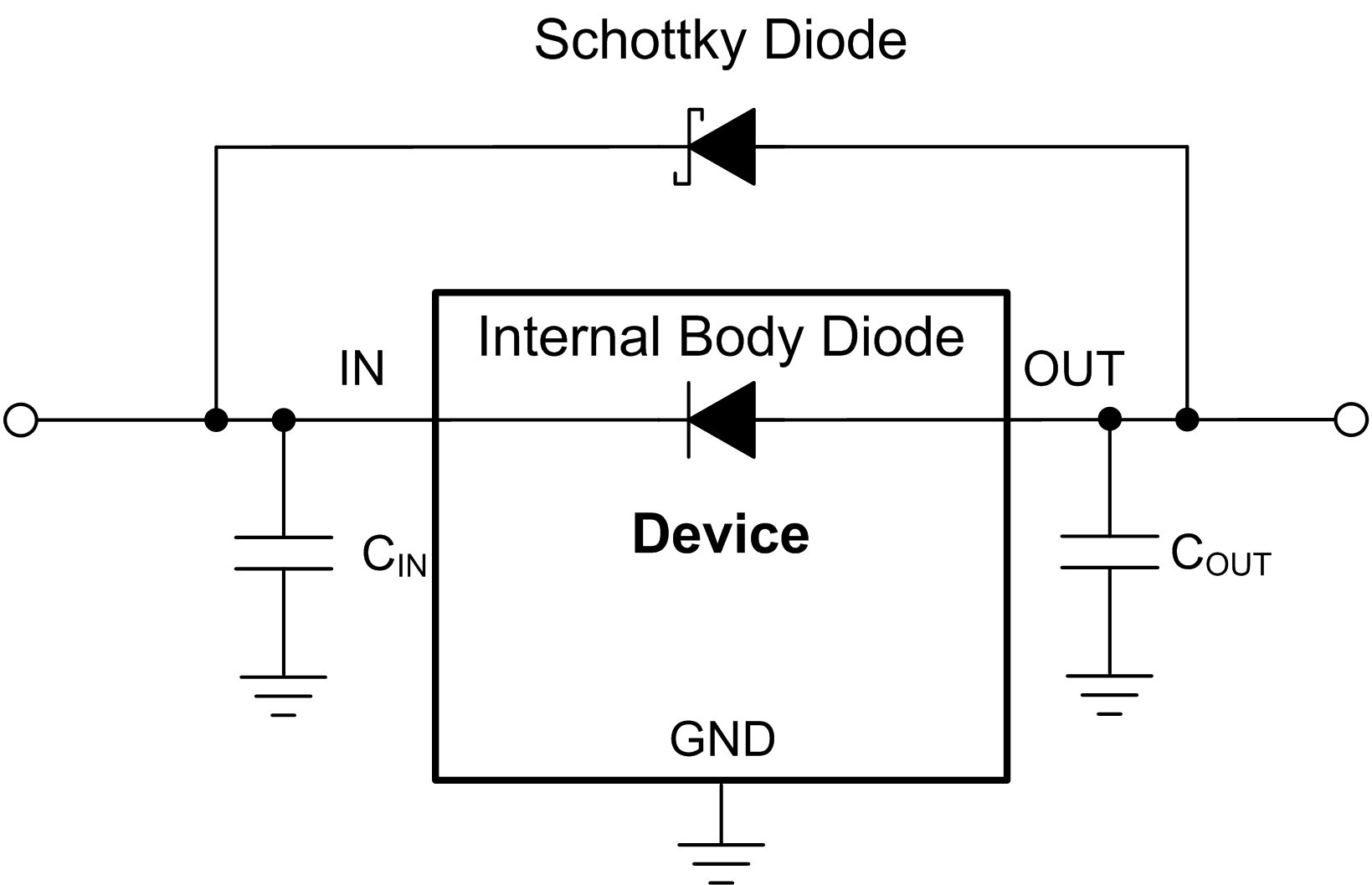JAJSTQ9E December 2001 – July 2024 TPS769-Q1
PRODUCTION DATA
- 1
- 1 特長
- 2 アプリケーション
- 3 概要
- 4 Pin Configuration and Functions
- 5 Specifications
- 6 Detailed Description
- 7 Application and Implementation
- 8 Device and Documentation Support
- 9 Revision History
- 10Mechanical, Packaging, and Orderable Information
パッケージ・オプション
デバイスごとのパッケージ図は、PDF版データシートをご参照ください。
メカニカル・データ(パッケージ|ピン)
- DBV|5
サーマルパッド・メカニカル・データ
発注情報
7.2.2.4 Reverse Current
Excessive reverse current potentially damages this device. Reverse current flows through the intrinsic body diode of the pass transistor instead of the normal conducting channel. At high magnitudes, this current flow degrades the long-term reliability of the device.
Conditions where reverse current occur are outlined in this section, all of which potentially exceed the absolute maximum rating of VOUT ≤ VIN + 0.3V.
- If the device has a large COUT and the input supply collapses with little or no load current
- The output is biased when the input supply is not established
- The output is biased above the input supply
If reverse current flow is expected in the application, use external protection to protect the device. Reverse current is not limited in the device, so use external limiting if extended reverse voltage operation is anticipated.
Figure 7-3 shows one approach for protecting the device.
 Figure 7-3 Example Circuit for Reverse
Current Protection Using a Schottky Diode
Figure 7-3 Example Circuit for Reverse
Current Protection Using a Schottky Diode